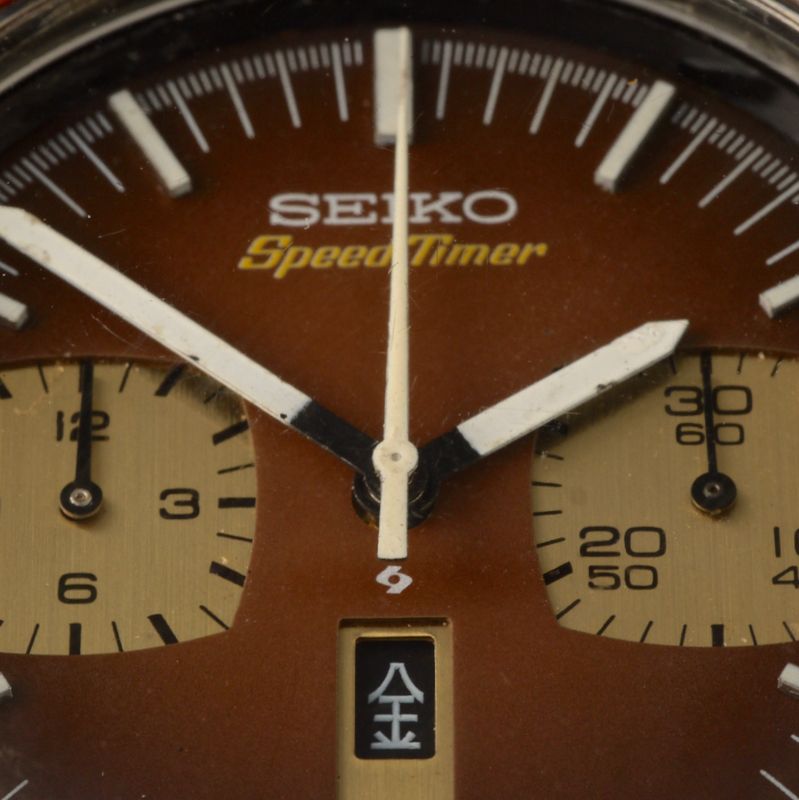
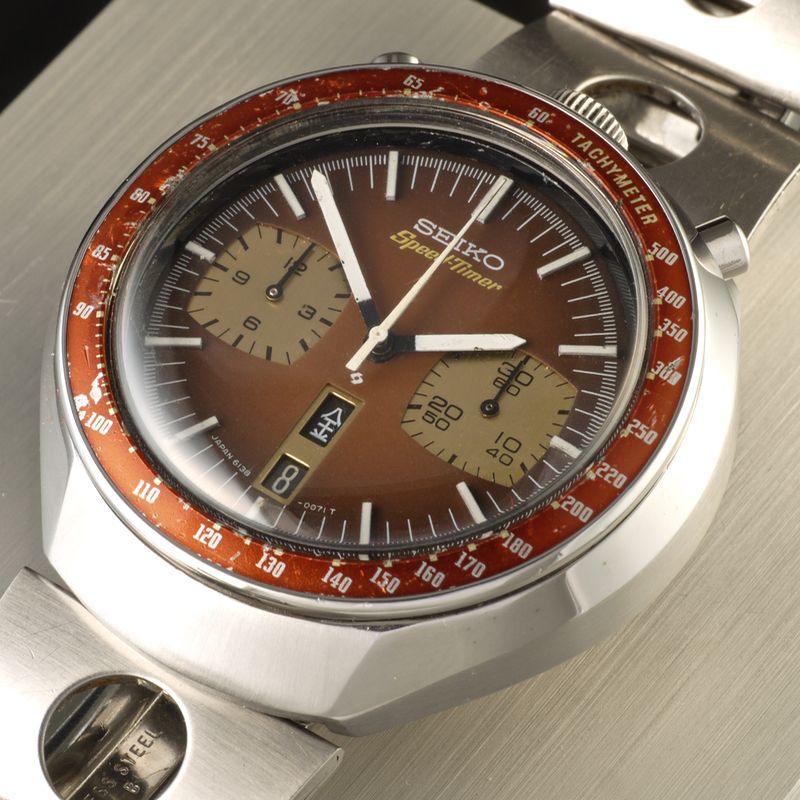
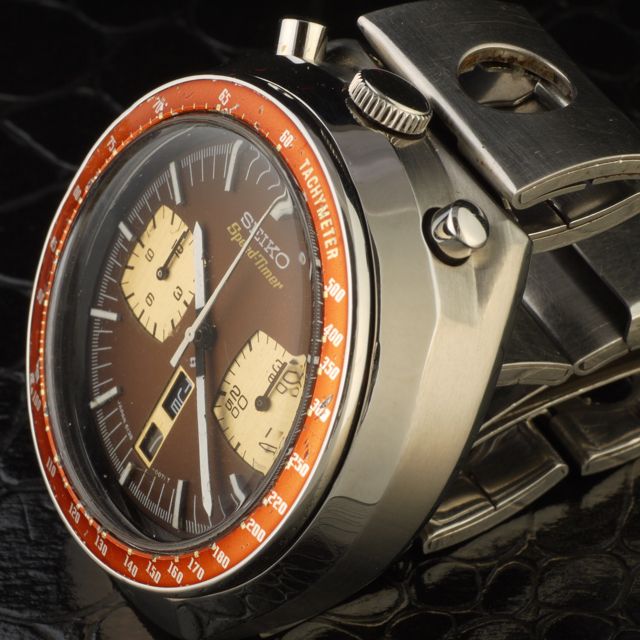
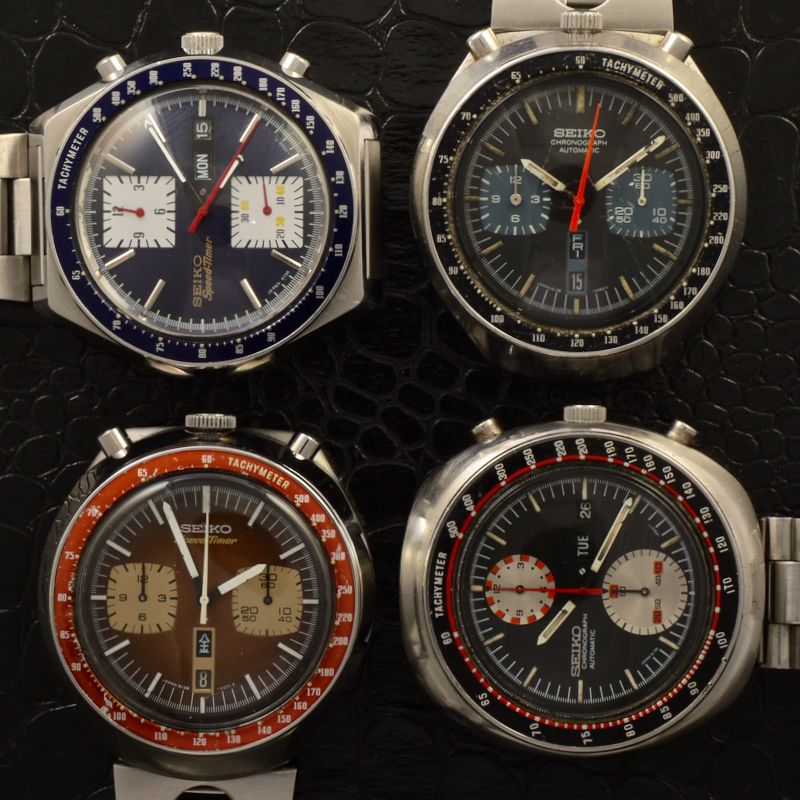
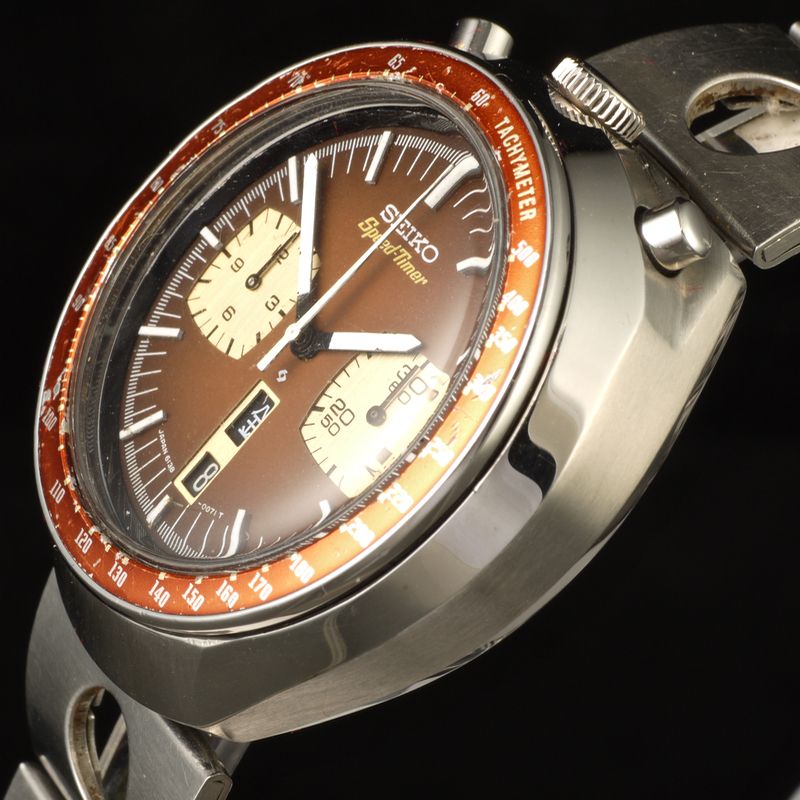
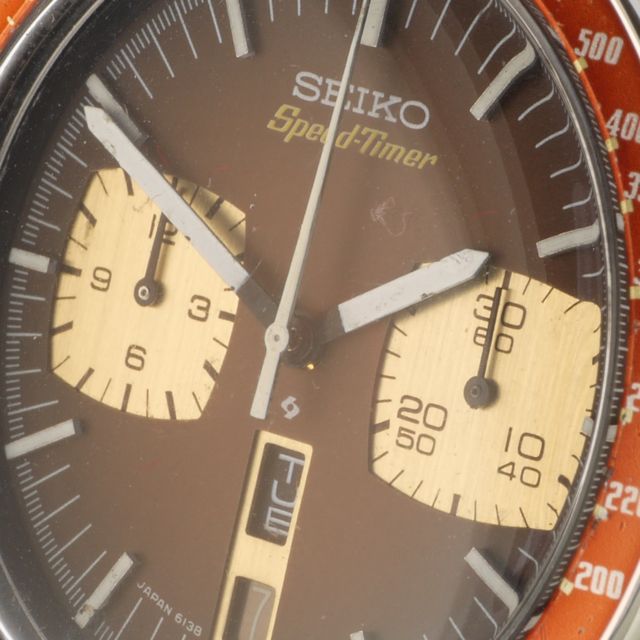
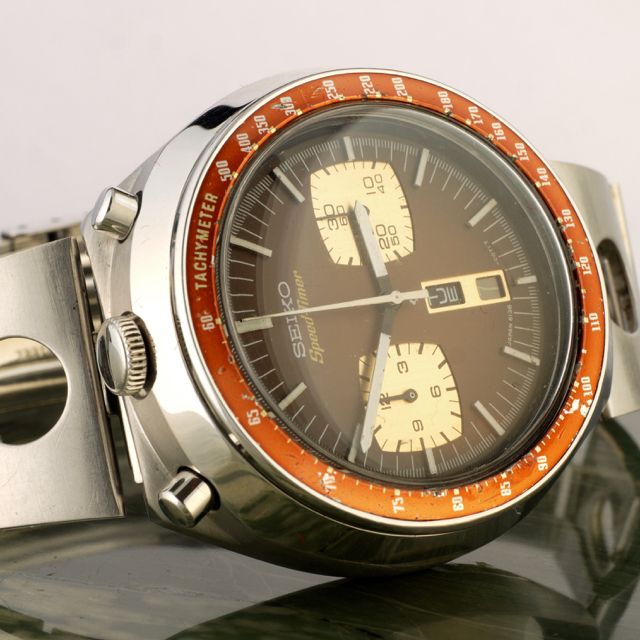
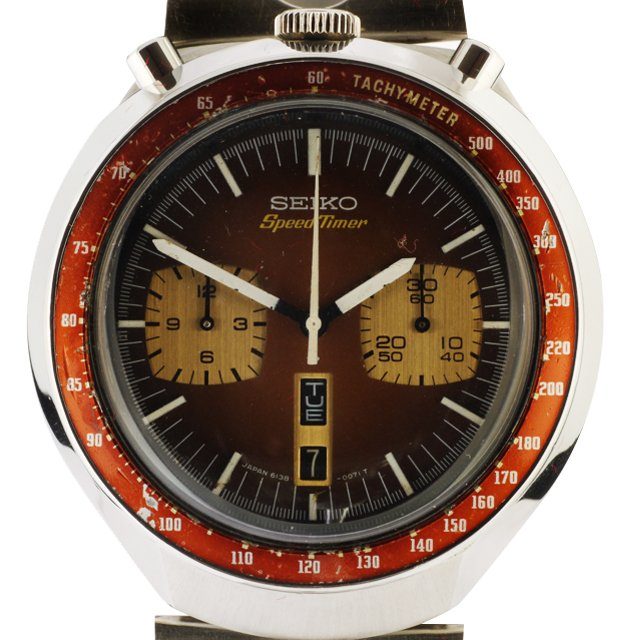
Seiko Bullhead
Louise Brown, the first test-tube baby, is born at Oldham Hostpital in London1977 Seiko Bullhead Chronograph ref. 6138-0049 or 6138-0040 brown dial.
The Seiko Bullhead 6138-0049 is one of the most unusual, and one of the coolest looking Seiko chronographs ever made.
Chronograph watches use the word bullhead as the term that have their crown and chronograph pushers on top of the case rather than on the side resembling the look of the head of a bull with its horns. They have no particular specialty other than in most cases, the company produces them in small numbers.
This watch comes in two color combinations, a reddish brown version with gold sub-registers and a black version with steely blue sub-registers, the original standard bracelet is a folded steel fish-bone style.
The 6139, successor of The 6138, released one year later and like they produced the 6139 until 1979. The most obvious difference between the two is that the 6138 is a two register chronograph, with an added 12 hour register.
Collectors highly prize Seiko mechanical watches. Seiko is a Japanese word meaning exquisite or success.
The company established in 1881 in Tokyo, Japan. Eleven years later, in 1892, Seiko began to produce clocks under the name Seikosha.
The first watches produced under the Seiko brand appeared in 1924. Seiko launches the Bell-Matic in 1966, World’s first automatic alarm watch with a central rotor.
1969 was an important year for Seiko, the company introduced the Seiko caliber 6139 considered for many collectors the real first automatic Chronograph and the Astron, the world’s first production quartz watch; When it was first in the market, it cost the same as a medium-sized car.
Three companies compete for the title of being the first company to have an automatic Chronographs, Zenith, Heuer, and Seiko.
Zenith announced the El Primero in January, the group behind the Heuer Caliber 11 start selling it to the global market first in August. While in Japan Seiko, quietly producing their automatic chronograph. Also releasing it to the Japanese market as early as May 69.
Finally, in 1985, Orient and Seiko established a joint factory.
Seiko is perhaps famous for its wristwatches, all of which were at one-time production, entirely in-house. This includes not only major items such as micro gears, motors, hands, crystal oscillators, batteries, sensors, LCDs, but also minor items. Such as the oils used in lubricating the watches and the luminous compounds used on the hands and the dials.
Seiko produces both quartz and mechanical watches of varying prices.
The brand Alba sold the slightest expansive, which is around US$45. The most expensive, CredorJuri GBBX998, costs US$554.000.
